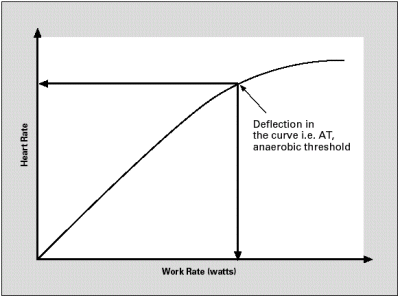Indoor Sport Services Training Guide
Our Indoor Rowing Training Guide is the ultimate training resource for the Indoor Rower. Written by top education and coaching specialists, it includes information on technique and training, with programmes on cross-training, 2,000m and marathon race training, weight management and keep fit. There are guest chapters written by top names such as Jurgen Grobler and Chris Shambrook as well as dedicated sections on psychology, nutrition and weight training.
Physiology - Physiological Tools
<< Training BandsFrequently Asked Questions on Physiology >>In order to achieve accurate results the same pre-test protocol should be carried out before the tests each time you undertake them. This should include:
- Being in good health.
- Being well rested with no heavy training sessions in the last 48 hours.
- No alcohol consumed within the last 24 hours.
- No strong coffee or tea in the previous three to four hours.
You will need a heart rate monitor and interface and where possible someone to record your results. The drag factor can be set to individual preference (see The Damper Lever and Drag Factor in Appendix). Row an eight to ten minute warm up followed by stretching as outlined in Stretching in Section 1 : Before and After Exercise. Then complete the warm up by rowing for five minutes with heart rate not exceeding 140 BPM and record the split time that corresponds to this heart rate.
Determining your MHR and Anaerobic Threshold
You will need someone to record your work rate and heart rate through this test. Start the test by rowing at the split you recorded from the warm up. After every 90 seconds note the heart rate and increase the effort by 25 watts (see 500m Split Time to Watts Conversion in Appendix). Repeat this procedure until you reach exhaustion and record the maximum heart rate achieved.
In order to find your anaerobic threshold you will need to have someone to record your heart rate and work rate in watts every 15 seconds. This will enable you to plot a graph of your heart rate against work rate.
You should then be able to find the point where there is a deflection in the curve. This corresponds to your anaerobic threshold. You can then find your heart rate and work rate at AT.

Finding an Estimate of Your Stroke Volume (ESV)
The following table gives an estimate of stroke volume based on a total blood volume of five litres.
To ascertain your estimated stroke volume from the above table, set the performance monitor to read watts and connect your heart rate interface. After a warm up, row at a constant watts setting as indicated in the boxes across the top of the table. Row at this intensity for four minutes.
After a while your heart rate will stabilise for a given workload. Using the column on the left hand side of the chart select the nearest heart rate to the one you observed in the test. Move across to the right until you arrive at the column that corresponds to your watts setting and read the stroke volume.
| Estimated Stroke Volume in Millilitres | |||||
|---|---|---|---|---|---|
| Heart rate | 110 watts | 165 watts | 220 watts | 275 watts | 330 watts |
| 100 | 162 | 188 | 233 | 258 | 303 |
| 105 | 155 | 179 | 221 | 245 | 288 |
| 110 | 148 | 170 | 211 | 234 | 275 |
| 115 | 141 | 163 | 202 | 224 | 263 |
| 120 | 131 | 156 | 196 | 215 | 252 |
| 125 | 130 | 150 | 186 | 206 | 242 |
| 130 | 125 | 144 | 179 | 198 | 233 |
| 135 | 120 | 139 | 172 | 191 | 224 |
| 140 | 116 | 134 | 166 | 184 | 216 |
| 145 | 112 | 129 | 160 | 178 | 209 |
| 150 | 108 | 125 | 155 | 172 | 202 |
| 155 | 105 | 121 | 150 | 166 | 195 |
| 160 | 102 | 117 | 145 | 161 | 189 |
| 165 | 98 | 114 | 141 | 156 | 183 |
| 170 | 96 | 110 | 137 | 151 | 178 |
| 175 | 93 | 107 | 133 | 147 | 173 |
| 180 | 90 | 104 | 129 | 143 | 168 |
| 185 | 88 | 101 | 126 | 139 | 164 |
| 190 | 86 | 99 | 122 | 136 | 159 |
| 195 | 83 | 96 | 119 | 132 | 155 |
| 200 | 81 | 94 | 116 | 129 | 151 |
Example - A heart rate of 160 on a setting of 220 watts = ESV of 145ml/beat.
Estimation Of Your VO2 max
The only precise way to determine your VO2 max is through a laboratory test that involves measuring the difference in oxygen content between inspired and expired air.
However, as a result of gathering data over a number of years a formula has been developed by which you can approximate your VO2 max. First you need to know your average power in watts for a 2,000m test.
This figure is then multiplied by 14.4 and a constant of 65 added to give VO2max in millilitres.
For example, 2,000m time = 6:40 therefore, from the table in 500m Split Time to Watts Conversion in Appendix, the average watts are 350.
350 x 14.4 = 5,040
This is an estimate within +/- 10%.

